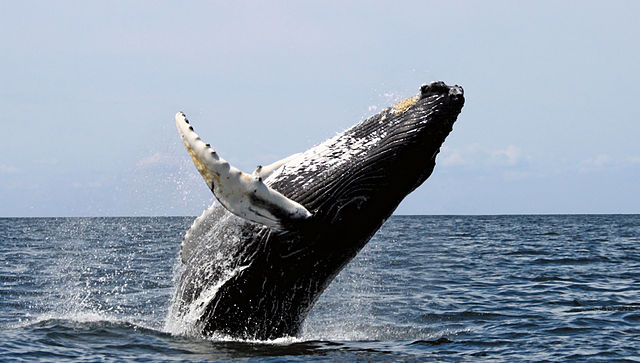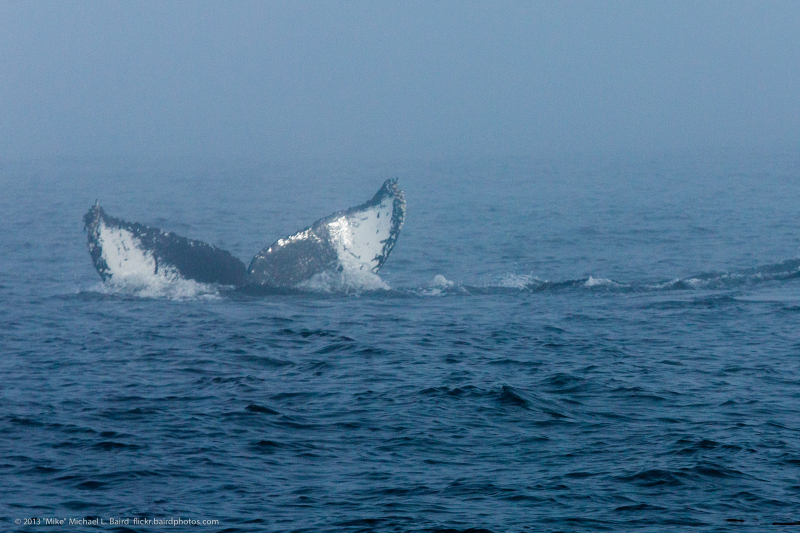Colours
Distinguishing features
The humpback has a distinctive body shape, with unusually long pectoral fins and a knobbly head.
A humpback whale can easily be identified by its stocky body with an obvious hump and black dorsal coloring. The head and lower jaw are covered with knobs called tubercles, which are hair follicles, and are characteristic of the species. The fluked tail, which it lifts above the surface in some dive sequences, has wavy trailing edges.
The long black and white tail fin, which can be up to a third of body length, and the pectoral fins have unique patterns, which make individual whales identifiable.
It is an acrobatic animal, known for breaching and slapping the water with its tail and pectorals. (Wikipedia)
Size
- Up to 1600 cm (Total Length)
Depth range
- Depth range data is not yet available.
Synonyms
Distribution
Diet
Humpbacks feed only in summer, in polar waters, and migrate to tropical or subtropical waters to breed and give birth in the winter. During the winter, humpbacks fast and live off their fat reserves. Their diet consists mostly of krill and small fish. Humpbacks have a diverse repertoire of feeding methods, including the bubble net feeding technique. (Wikipedia)





